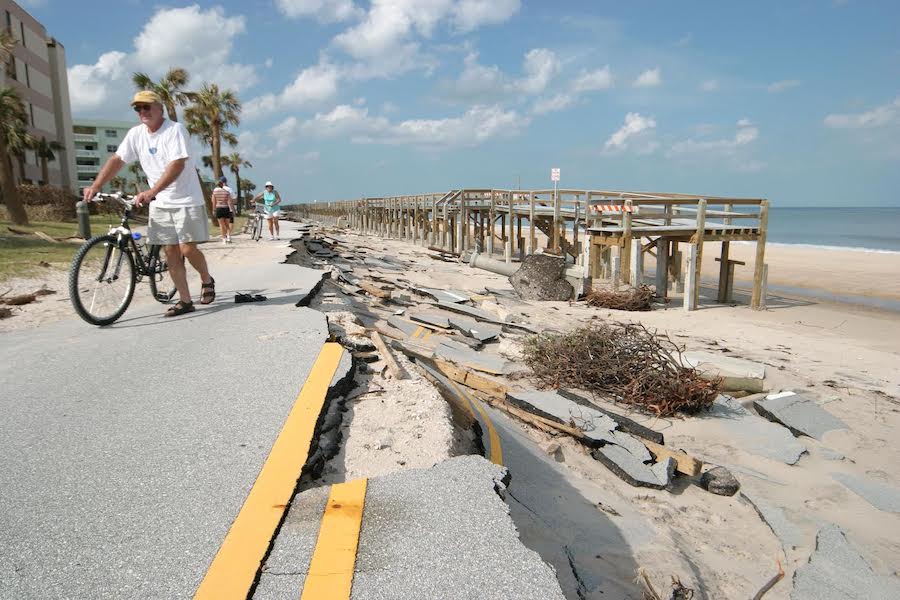Top Guidelines Of Shore Protect Team
Table of ContentsThe Basic Principles Of Shore Protect Team The Best Strategy To Use For Shore Protect Team7 Easy Facts About Shore Protect Team ShownShore Protect Team Fundamentals ExplainedThe 15-Second Trick For Shore Protect TeamSome Known Questions About Shore Protect Team.All about Shore Protect Team
The ideal seawall design relies on location-specific facets, consisting of surrounding disintegration procedures. There are three main types of seawalls: vertical, rounded, tipped, and piles (see table listed below).
All-natural obstacles, such as coral reefs and mangrove woodlands, stop the spread of tidal waves and the flow of seaside waters and mitigated the flooding and surge of water. A cost-benefit approach is an efficient method to identify whether a seawall is suitable and whether the benefits are worth the cost.
Some Ideas on Shore Protect Team You Need To Know

Can exist much longer in high energy settings in comparison to 'soft' engineering techniques. Can be made use of for recreation and sightseeing and tour. Forms a difficult and solid coastal protection. Expensive to construct - bulkhead cost. May be thought about visually unappealing. Mirrored energy of waves resulting in comb at base. Can interrupt all-natural coastline processes and damage shoreline habitats such as wetlands and intertidal coastlines.
The Ultimate Guide To Shore Protect Team
This can create beaches to dissipate, rendering them useless for coastline goers. Normally, seawalls can be a successful method to control coastal erosion, but just if they are created well and out of materials that can withstand the force of recurring wave energy. Some understanding is needed of the seaside procedures and morphodynamics particular to the seawall area.
Superstorm Sandy sent out a storm rise of 45 m onto New Jacket's and New York's obstacle island and city shorelines, approximated at $70 billion in damage. This issue could be gotten rid of by further modeling and determining the expansion of elevation and support of current seawalls which needs to happen for security to be made sure in both scenarios.
Shore Protect Team Fundamentals Explained
, rain percolating right into the ground behind the wall and waves overtopping the wall.

Lack of maintenance is additionally a significant issue with seawalls. In 2013, even more than 5,000 feet (1,500 m) of seawall was discovered to be crumbling in Punta Gorda, Florida. Residents of the area pay hundreds of dollars yearly for a seawall fixing program. The issue is that most of the seawalls are over a half-century old and are being destroyed by just heavy rainstorms.
Some Known Questions About Shore Protect Team.

Seawall building and construction has existed since old times.
They were floated right into placement and sunk. The resulting harbor/breakwater/seawall is still out there today even more than 2000 years later on. The oldest known coastal defense is thought to be a 100-meter row of stones in the Mediterranean Sea off the coastline of Israel. Rocks were placed in an attempt to protect the coastal negotiation of Tel Hreiz from sea surge adhering to the last glacial optimum.
10 Simple Techniques For Shore Protect Team
Extra lately, seawalls were created in 1623 in Canvey Island, UK, when wonderful floodings of the Thames estuary occurred, motivating the building of protection for further events in this flood-prone area. Ever since, seawall style has come to be more complex and intricate in reaction to an enhancement in materials, modern technology, and an understanding of just how seaside procedures run.
The former French colonial territory of Pondicherry escaped unscathed. This was mostly due to French designers who had actually created (and preserved) a substantial stone seawall while when the city was a French swarm. This 300-year-old seawall successfully kept Pondicherry's historic facility dry despite the fact that tidal wave waves drove water 24 ft (7.3 m) over the normal high-tide mark.
Some Ideas on Shore Protect Team You Need To Know
At its highest possible, the obstacle running along the water's side gets to about 27 ft (8.2 m) above water level. The stones, some weighing up to a heap, are weather-beaten black and brownish. The seawall is evaluated every year and whenever gaps appear or the stones penetrate the sand, the government adds more stones to keep it solid.